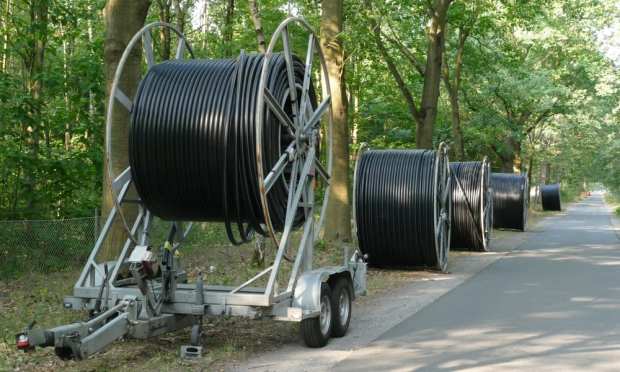Using 5G To Build Tomorrow’s Smart Cities, Today

Smart cities powered by 5G networks have long been forecast as coming soon to major metros all over the world.
But actual progress has been limited by various regulatory and technological headwinds that have kept the connected smart city more a vision of the future than a concrete reality of the present. However, CEO Ian Aaron of Ubicquia, a smart cell and smart grid technologies company, told PYMNTS that the past half year has changed the outlook for smart cities.
He said the regulatory environment has significantly changed, with an opening up of the citizen’s band radio spectrum (CBRS) for private LTE, along with a hierarchy of different licenses for operating within it.
“What makes that exciting is it allows cities to provide carrier-class LTE services in a private LTE format,” Aaron said.
That will open the door to cities to reach their segments and citizens that heretofore lacked high-speed internet access.
He said that’s a problem that has presented itself as critical in the past six months — with coverage gaps not merely a problem but a crisis for municipalities trying to deliver services like online schooling. Cities often found that many of their residents weren’t able to get online and had no easy way to do so.
“It’s amazing, but there are over 60 million people without broadband in the U.S.,” Aaron said. “Cities already had challenges in addressing this that have only been amplified by COVID.”
He said municipalities initially addressed the problem with subsidies from carriers that provide funding for emergency access to the excluded. But Aaron said that aid is mostly set to expire as of the first quarter of 2021.
“So, the cities are now scrambling [for] permanent solutions, and … asking themselves, ‘How do we expand broadband to disenfranchised areas?” Aaron said. “I don’t know a city where this is not a critical agenda item.”
Building The Foundation For 5G
Ubicquia’s goal is both very simple and very complex at the same time. The firm hopes to work with municipalities, mobile providers and utilities to create and provide products that make it easier for cities to stay smarter, safer and more connected, Aaron said.
The company does that through a network of proprietary devices designed to plug into the top of the average streetlight. Aaron said the units “can do everything from control the lights to provide metering data and utility quality … for the utilities. It helps provide things like location-based services for cities. And then we have other products that plug in to provide public Wi-Fi and video and audio AI to help with traffic and public safety.”
The system’s small cell plug-ins are easier to use than relying on large cell towers that are hard to build and hard to win permits for. Ubicquia touts its devices as a smaller, lighter and faster way to make use of streetlight infrastructure that’s already there to make smart cities a reality.
How Las Vegas Is Reaching Out To The Tech-Disenfranchised
Not having access to broadband was certainly an inconvenience or annoyance before the pandemic. But now, having access to high-speed internet can be the difference between holding onto a job and working remotely or losing it entirely. It can also be the difference between your kids being able attend school virtually or miss an entire term.
Aaron said it is, in short, mission critical — and something the city of Las Vegas recently turned to Ubicquia for help with.
“We were able to quickly plug in our streetlight small cells, leverage the cloud-based core service providers, and literally with nominal capex, deploy an LTE-like service — but in the new licensed spectrum,” he said. “And in the throes of COVID, they were able to extend broadband in the areas where it wasn’t.”
Once connected to the schools, the broadband access enabled kids armed with Chromebooks to attend remote learning that they simply wouldn’t have been able to without the expanded LTE service.
And while Las Vegas is thus far the only city going public on efforts with Ubicquia, Aaron said it’s far from the only one making such a fast pivot.
“You’ll be hearing a lot more about that in coming months,” he said.
What Comes Next
But Aaron said the really fun part is about to start, as we’re only at the beginning of how the expanding world of 5G will change how we all live.
He said he expects we’ll soon see very wide deployment of a sub-6 gigahertz conversion range variation on 5G. The slightly more advanced and technologically involved sub-5 millisecond latency periods are the outer reaches of what 5G can provide.
But all of it is coming. After all, what cities across America have seen in the past six months is that 5G and the wider availability of high-speed internet isn’t just something they want to have some day — it’s something they need to have today.